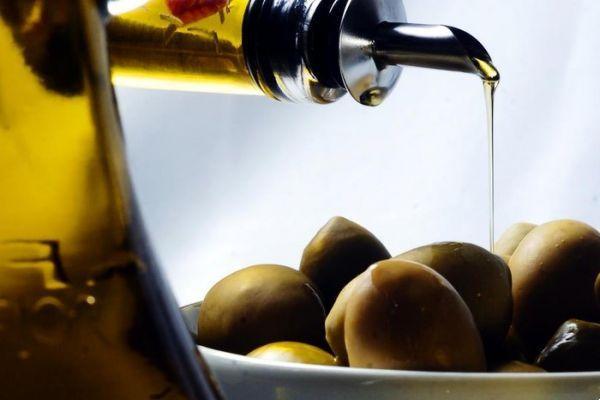
The history of olive oil
In order to trace the history of olive oil it is necessary to rely on the findings of excavations and archaeological research. At the level of diffusion of the olive tree, in its wild variety, olive stones have been found dating back to around 10.000-8.000 years before the birth of Christ, in the period Mesolithic.
The olive tree has very ancient origins. However, millennia still had to pass before this precious fruit was used in its maximum expression, that is, for the production of olive oil.
The place of choice for the growth of this plant was, at first, theAsia Minor: that area between Palestine, Lebanon and Upper Egypt, overlooking the Mediterranean Sea and along Mesopotomy up to the Persian Gulf, considered a particularly fertile and fertile strip.
Just contact with the Mediterranean allowed this plant to be brought by the Greeks, on the market, throughout the closed basin of this sea, up to the country, where it found the ideal conditions to thrive and grow.
It is difficult to date the first olive presses: olive oil has been found in traces in Roman and Greek amphorae of the same period, around 500 BC Who has passed from appreciating the aesthetic and culinary, as well as domestic, qualities ofwild olive tree, to domesticate this plant for commercial reasons, it is difficult to say.
Some claim it was the Greeks, some the Etruscans, some the Syrians. In all of this, one thing is certain: the olive tree and oil are inextricably intertwined with the birth and prosperity of the Mediterranean populations and culture.
History and mythology are intertwined: the oil was considered sacred by Athena: the athletes who participated in the festivals in her honor were given olives and oil, and in Roman and Greek ceramics are often depicted olive leaves and plants, to decorate rooms and clothing of important political and social personalities.
In the country it seems the Etruscans were the first to introduce, together with the culture that will give life toRoman Empire, and in particular in the Tiber valley, also the use of olive oil for cosmetic and food purposes. In this first period, oil was still a product reserved for the aristocracy. But soon the Roman populations will learn to cultivate and prosper olive trees, to press oil and make it a quality product of their lands.
That's how theolive oil becomes widespread.
Read also Cold oil extractors, how they work >>
The spread of olive oil in the country
The first appeared around the third century BC agronomy treaties Roman in which the cultivation and processing of olives is also mentioned: around 160 BC Marco Porcio Catone indicates how the olives must be and the method of harvesting to obtain good oil. And in this way the olive tree is mentioned in many works as a quality plant, con una resa elevata a fronte della minim cui necessita.
The birth and expansion of the Roman Empire go from the XNUMXst century BC to the XNUMXth century AD: Roman soldiers conquer the entire Mediterranean and also spread the cultivation of olive trees. In fact, oil is no longer used only for food purposes, but also as mechanical and lighting lubricant, as well as as a cosmetic. Olive oil shares the glory of that period with the Roman Empire.
From the fifth century until the Middle Ages, production and diffusion contracted: in those centuries of famine mainly local olives are pressed and for domestic use, trade decreases. But after the year one thousand a very rich cultivation of olive trees flourished in Puglia: Venice too would import oil from those areas, rivaling Genoa in trade.
Meanwhile, after 1300, thrives the olive oil season: from south and the country, land of choice for the growth of this plant, olive groves also spread in the center of the country and in the north, in Tuscany and Lombardy. Throughout the Renaissance and up to the sixth century, olive oil was traded abroad from the largest ports and villages. Also in Sardinia the first olive trees are imported, which will give excellent oil.
Among ups and downs of this millenary product we find a crisis between the end of the 800th century and the last decades of the last century. The climatic variations in the Mediterranean basin, and in particular in the country, bring frosts that are badly tolerated by the olive groves.
And so the country goes from being the first producer and exporter to have to recall olive oil from other states, or to lower the quality of its oil, despite the DOP denominations and extra virgin.
In last years it aimed at a niche production of olive oil controlled and certified origin, trying to implement the production of cold pressed extra virgin olive oil which, in addition to guaranteeing the origin of the olives, also determines the pressing and processing cycle at low temperatures, for preserve its exceptional nutritional qualities.
In fact, olive oil is considered one of the "good fats". With the growing attention to a healthy diet, the Mediterranean diet has been re-evaluated, of which olive oil is one of the protagonists. Rich in monounsaturated fatty acids, vitamin E, polyphenols, olive oil has been, for millennia, up to the present day, a mine of health.
Read also
> Olio di oliva per l pelle, capelli e unghie
> All about the properties of olives
Foto: Dusan Zidar / 123rf.com


























